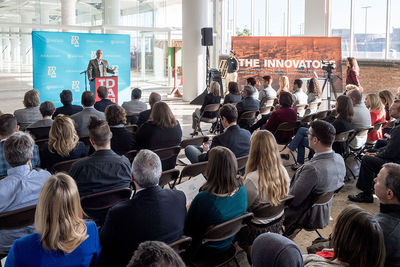 Bryan Ritchie, associate provost & vice president for innovation, speaking at Studebaker 113 in South Bend
Bryan Ritchie, associate provost & vice president for innovation, speaking at Studebaker 113 in South Bend
Executive Summary
Over the last few decades, economic growth has become increasingly concentrated in the nation’s largest cities. Since 2010, America’s biggest metropolitan areas have been responsible for fully two-thirds of all economic growth and 73 percent of all employment gains. Conversely, America’s smaller cities have actually contributed -6.5 percent to economic growth and only five percent of employment gains over the same period of time.1 While some have called this trend unstoppable,2 the reality is that there have been a number of smaller metropolitan areas that have bucked this trend spectacularly. Provo-Orem, Utah; Boulder, Colorado; Gainesville, Florida; Austin, Texas; and the Midwestern cities of Ann Arbor, Michigan; and Madison, Wisconsin have each established themselves as small, but mighty innovation hubs and have experienced strong economic growth as a result.
Because of the many economic benefits associated with being an innovation hub, such as fast wage and employment growth, high productivity and resilience against unemployment, we believe the South Bend-Elkhart region can and should become one of these smaller, but dynamic, innovation hubs. Getting there, however, won’t be easy. As with any journey, we must start by finding out where we are and then plot a route to our destination. The purpose of this report is to do just that. As such, it is not a critique; it is a tool for the many groups in the South Bend-Elkhart area working towards creating a more robust, dynamic economy to use as a baseline.
In particular, this baseline is comprised of seven measures that economists and others tend to use for understanding whether an area is a tech city or an innovation hub.3 These metrics are: 1) growth of new businesses, 2) the investment amount of venture capital deals, 3) the number of venture capital deals, 4) the percentage knowledge workers make up of an area’s workforce, 5) the percentage tech workers make up of an area’s workforce, 6) educational attainment of the region’s population and 7) income growth.
As shown in Figures 25 through 28, which are explained in greater detail in the body of this report, we found that when averaged, the six highlighted innovation hubs above not only beat the national average in each of these seven metrics by considerable margins, they also exceed metrics for the South Bend-Elkhart region by an even larger ones, indicating the significant challenge we face as a region in our effort to transform our economy.
While Figures 25 to 28 generally show that the area is not currently an innovation hub, it’s important to point out that Provo-Orem, Boulder, Gainesville, Austin, Madison and Ann Arbor had to start somewhere. As shown in Figures 12 to 19, which are found in the main body of this report, since 2014, South Bend-Elkhart has seen positive growth in five of the seven innovation hub metrics. It has only seen a small decline in growth of new establishments and no growth in the number of venture capital deals. The growth of new establishments number did, however, turn positive in 2015. Data are unavailable for 2017.
For South Bend-Elkhart to become an innovation hub, it will need to specialize in a few key tech areas, especially those ones we are already strong in or have a foothold in. In addition, we must retain more of our college graduates by providing them with better opportunities, train more tech graduates and get global in focus. These strategies will, over time, help South Bend-Elkhart transform into an innovation hub similar to, if not stronger, than the ones we compare it to in this report.
Introduction
From “Silicon Slopes” to “Silicon Prairie” and from “Silicon Beach” to “Silicon Peach,” communities around the world have for decades tried to replicate the incredible density of innovation that routinely occurs in Silicon Valley. Despite their best efforts, no single region has been able to even come close to matching the Bay Area’s dominance. Although it no longer reigns as supreme as it did from the mid-1980s to approximately 2015, it is still undoubtedly the leader of innovation in the nation, if not the world. Indeed, 40 percent of of all technology investments still go to Bay Area companies, a number unchanged for some time.4 Moreover, it has, by far, the densest concentration of tech companies in the world, the largest percentage of high-tech workers in the nation and 67 percent of all major company acquisitions since 2006 have been of California-based firms.5 While no single community will likely be able to match Silicon Valley in the foreseeable future, a new trend is showing that a combination of others have and can capture some of its zeitgeist.
In an important report released last year, the Kauffman Foundation found that entrepreneurship is “increasingly happening beyond the stereotypical entrepreneurial hubs of places like Silicon Valley and Boston….[and that] venture capital is more distributed than it was.“6 As Steve Case, co-founder of AOL and a major advocate of funding non-Bay Area startups, recently stated, “In recent years, if an entrepreneur wanted to start a software company, he or she would probably be better off by moving to Silicon Valley or Boston. That’s changing.”7
In the last eight years, larger cities such as New York City, Washington D.C., Seattle, Denver, Los Angeles, San Diego and now Miami, Nashville and St. Louis have emerged as startup hubs. More interesting and relevant to us, however, has been the rise of less-populated innovation hubs that we believe South Bend-Elkhart can more easily seek to emulate than these larger cities, let alone Silicon Valley. Provo-Orem, Utah; Boulder, Colorado; Gainesville, Florida; Austin, Texas; and the Midwestern cities of Ann Arbor, Michigan; and Madison, Wisconsin have each established themselves as leading tech hubs in the nation, just on a smaller scale.
This latter issue, namely that these six smaller metropolitan areas have established themselves as growing innovation hubs, is of vital importance for South Bend-Elkhart. This is because during the past few decades, economic growth has become increasingly concentrated in the nation’s largest cities. Since 2010, America’s biggest metropolitan areas have been responsible for fully two-thirds of all economic growth and 73 percent of all employment gains. Conversely, America’s smaller cities have actually contributed -6.5 percent to economic growth and only five percent of employment gains over the same period of time.7 While some have called this trend unstoppable,9 the reality is that the aforementioned six smaller innovation hubs have bucked this trend spectacularly. Indeed, Provo-Orem, Boulder, Gainesville, Austin, Ann Arbor and Madison have each established themselves as small, but mighty innovation hubs and have experienced strong economic growth as a result. The potential exists for the South Bend-Elkhart region to become such a small innovation hub.
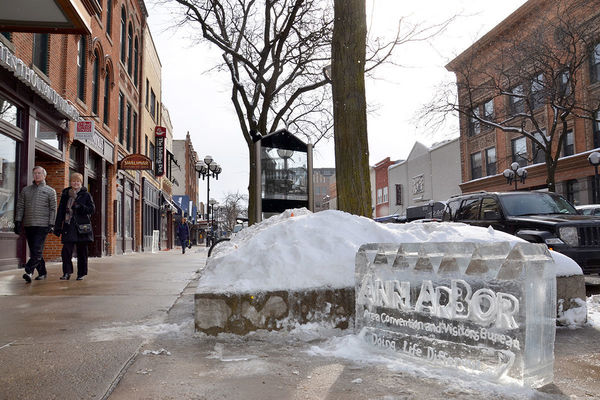 Ann Arbor, MI
Ann Arbor, MI
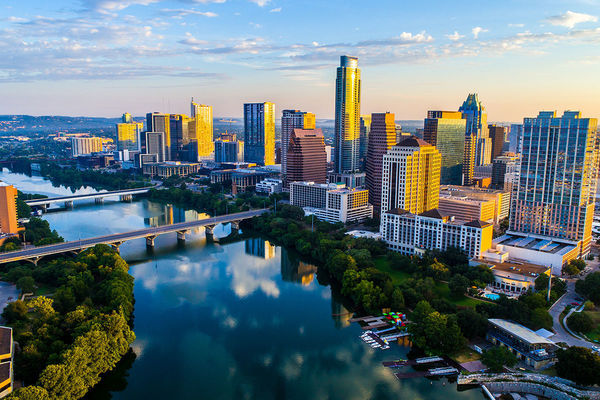 Austin, TX
Austin, TX
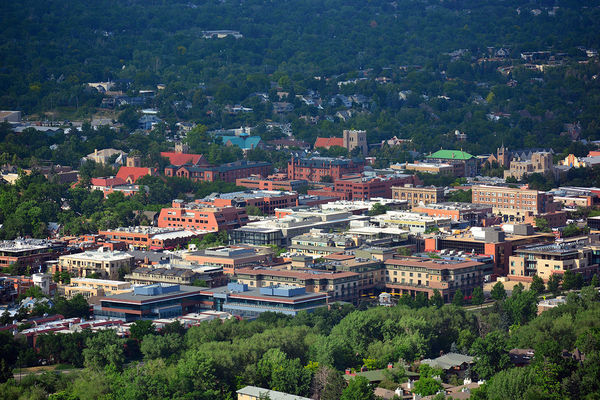 Boulder, CO
Boulder, CO
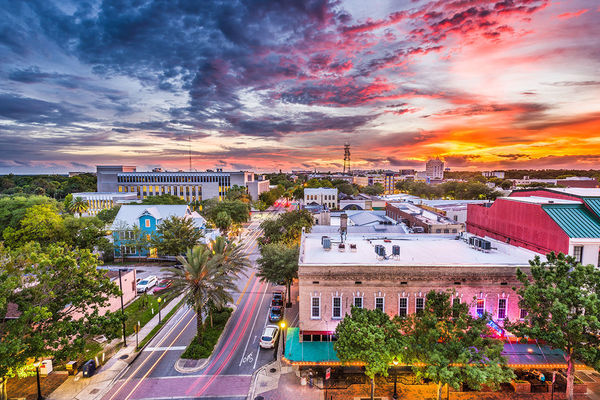 Gainesville, FL
Gainesville, FL
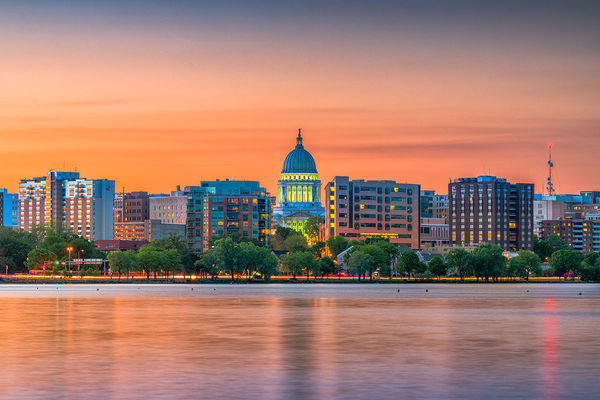 Madison, WI
Madison, WI
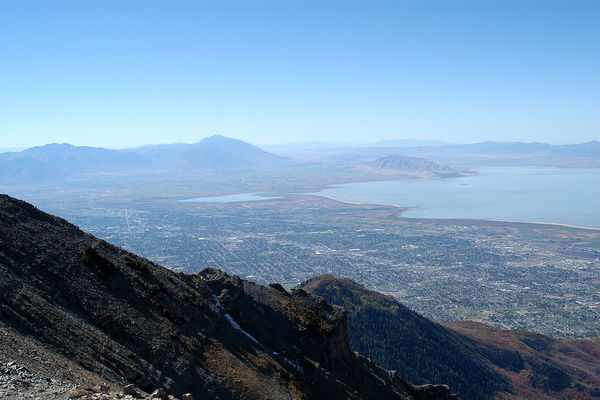 Provo-Orem, UT
Provo-Orem, UT
In addition to countering the trend of economic growth concentrating in major cities, each of the six innovation hubs identified in this report have three other important characteristics in common: 1) they are not on a coast, 2) they are not near major centers of venture capital activity and 3) they each have a major, outward facing research university at their core.
Before we explore these smaller innovation hubs in detail, however, the question of why South Bend-Elkhart should seek to become one needs to be briefly answered. After all, what’s in it for us? As it turns out, a lot. Simply put, areas that have become startup/innovation hubs are continually ranked as having the best performing economies in the nation. Indeed, the startups hubs of San Francisco, San Jose, Austin, Seattle, Denver, Nashville, Boston and Washington, D.C. make up eight out of the top 10 best performing economies in the country.10 Furthermore, startup hubs dominate where wages are growing the fastest. The startup leaders of San Francisco, San Jose, Seattle, Miami, St. Louis, San Diego, Denver, Austin and Washington, D.C. make up the top 10 areas where wages are rising rapidly.11 Expanding on this, a report by the Small Business Administration found that those regions with bustling entrepreneurial activity “...had 125 percent higher employment growth, 58 percent higher wage growth and 109 percent higher productivity” than those without.12
Moreover, as discussed in our series “The Big Small,” startups, particularly high potential ones, are responsible for all net job growth in the United States, experience growth rates substantially higher than other firms, are responsible for a great deal of the innovation that happens in the world and routinely open new markets and upend others. Simply put, the more startups, the more businesses and innovation, and the more businesses and innovation, the more good jobs we have and therefore the higher the standard of living we enjoy.
We believe the South Bend-Elkhart region can and should capture these benefits and become a hub of innovation similar to the aforementioned six areas of Provo-Orem, Boulder, Gainesville, Austin, Ann Arbor and Madison. The question is: how will we know when we get there and how do we know we’re not there already? To answer this, we pulled data on metrics economists and others often use to measure whether an area is a tech city or an innovation hub.13 We did this not only for the South Bend-Elkhart region but also for the six innovation hubs, Indiana and the United States and compared how South Bend-Elkhart ranks against them. These seven metrics of innovation are: 1) growth of new businesses, 2) the investment amount of venture capital deals, 3) the number of venture capital deals, 4) the percentage knowledge workers make up of an area’s workforce, 5) the percentage tech workers make up of an area’s workforce, 6) educational attainment of the region’s population and 7) income growth.
While these seven measures generally define what an innovation hub is, at the end of this report we also compare South Bend-Elkhart to the six innovation hubs for recession unemployment, unemployment variance and per capita GDP. And, in Appendix 1, we compare South Bend-Elkhart to four areas with similar economic makeups as ours but are generally doing better economically: Grand Rapids, MI; Greenville-Spartanburg, SC; Cedar Rapids, IA; and Akron, OH.
Finally, it’s important to point out that the purpose of this report is to establish a baseline for the many groups in the South Bend-Elkhart area working towards creating a more robust, dynamic economy. It is not intended as a critique. As with any journey, we need to find out where we are first and then plot a route to our destination. This report seeks to do both.
1. Number of Establishments
In order for an area to be a startup hub, it must create considerably more businesses than it sheds. As shown in Figure 1, from 2010 to 2016 (post recession) the United States averaged only a 0.61 percent new establishment growth rate. Innovation hubs such as Austin and Provo-Orem, however, averaged rates of 3.17 percent and 2.77 percent respectively, with some years being as high as 5 percent (Figure 2). The six combined innovation hubs, which we are terming “Comparable Innovation Hubs” in the figures, averaged a two percent growth rate. South Bend-Elkhart averaged -0.56 percent and Indiana 0.01 percent over the same period. It should be noted that the slow growth South Bend-Elkhart has experienced in business creation is not unusual for a community its size. As noted by the Kauffman Foundation, “There are increasingly fewer startups in rural parts of America. Moreover, while many mid-size metros are doing well, smaller metros are registering low rates of firm formation.”14
The number of establishments in South Bend-Elkhart peaked in 1997 at 22,375. In 2016, the area had 20,192. Before the recession in 2008, it had 21,743. As such, the area still has not recovered the number of firms it lost during the recession, or in the preceding decade for that matter. Except for the Ann Arbor area, 2016, the last year data were available, was the year in which the number of establishments peaked for the six innovation hubs. This means that the growth of new establishments in these areas is robust and has bucked the national trend of growth concentrating in major metro areas.
2. Venture Capital Investment Amounts
All innovation hubs have a considerable number of venture capital deals. Richard Florida of CityLab said that this “...is the single best [measure] for distinguishing real centers of high-tech industry…[as it is] a direct monetary gauge of high-tech hubs: It reflects the places actual venture capitalists are betting on high-tech businesses.”15 It is also a measure of the quality of the startups in particular areas as venture capital companies tend to be picky investors.
Previously, venture capital deals were concentrated in the major metro area startup hubs like Silicon Valley, Boston and New York. Now, according to the Kauffman Foundation, “Venture capital is more distributed than it was…”,16 a development that is encouraging for emerging innovation hubs.
As shown in Figure 3, of the six innovation hubs, Austin easily leads the pack with an average of $2.66 billion invested per year from venture capital firms from 2010 to 2016. The average amongst the six innovation hubs is $689 million.
What’s remarkable about these data, is that the Boulder area, with a population of 321,173 in 2016, averaged 73 percent more venture capital investment than the entire state of Indiana from 2010 to 2016, which had a population of 6.6 million in 2016.
When the numbers are adjusted for population, as they are in Figure 4, Austin again leads with an average venture capital investment per person of $2,308, with Boulder not far behind at $2,111. The six innovation hubs average $1,308 per person. South Bend-Elkhart’s per person average is $7 while Indiana’s is slightly higher at $60. Both of these are considerably behind the United States’ average of $225 per person.
3. Number of Venture Capital Deals
As shown in Figure 6, among the six innovation hubs, Austin averaged 262 venture capital deals per year from 2010 to 2016 on the high end and Gainesville averaged 14 on the low end. Over the same period, the combined innovation hubs averaged 83 venture capital deals and South Bend-Elkhart averaged around four. Once again, Boulder comes out on top over the entire state of Indiana as it averaged more deals than the state with Austin averaging three times more.
4. Percentage of Knowledge Workers
Innovation hubs have a higher percentage of workers who fall under the “knowledge workers” category than the national average. These workers comprise one of the main pools of talent high tech companies pull from when staffing their firms.
Knowledge workers make up the Bureau of Labor Statistics’ categories of: management occupations; computer and mathematical occupations; architecture and engineering occupations; life, physical and social science occupations; education, training and library occupations; and healthcare practitioners and technical occupations.
As shown in Figure 8, 38 percent of Ann Arbor’s workforce in 2016 was made up of knowledge workers. The six innovation hubs averaged 30 percent while Indiana and South Bend-Elkhart’s workforces are 20 percent and 19 percent knowledge workers, respectively.
5. Percentage of Tech Workers
Similar to knowledge workers, but more specific, and slightly more important to innovation hubs, are tech workers. Tech workers are essential for a community to become an innovation hub as they comprise the key group of employees who perform the core, complex tasks high tech companies require. 27 percent of San Jose, California’s workforce, for instance, are tech workers but the United States’ average is only 3.5 percent.
Tech workers make up the NAICS categories of: computer systems design and related services; pharmaceutical and medicine manufacturing; computer and peripheral equipment manufacturing; software publishers; telecommunications; data processing, hosting, and related services; and medical and diagnostic laboratories.
As shown in Figure 9, 11 percent of Boulder’s workforce is tech workers with 8 percent being the average among the six innovation hubs. Indiana’s workforce is 2.5 percent tech workers but South Bend-Elkhart’s is only 0.78 percent. We should note, however, that this latter number is probably lower than it really is due to some categories not being reported by the Bureau of Labor Statistics for the area. Even so, South Bend-Elkhart’s tech workers percentage is very likely no higher than Indiana’s average as only categories with few workers go unreported by the Bureau of Labor Statistics, the source of these data.
6. Educational Attainment of Population
According to data from the Kauffman Foundation, “Adults without formal education—regardless of race—are much less likely to be entrepreneurs than their educated counterparts.”17 Moreover, high tech startups require a pool of workers who are highly educated. Not surprisingly, innovation hubs have a large percentage of their population over the age of 25 with a bachelor’s degree or higher. As shown in Figure 10, of the six innovation hubs in 2016, Boulder leads with 59.3 percent of its working population having a bachelor’s degree or higher. The average of the six innovation hubs was 47.9 percent. 30.3 percent of the population over 25 in the United States has a bachelor’s degree or higher while only 24.6 percent and 21.1 percent do so in Indiana and South Bend-Elkhart, respectively.
7. Income Growth
If rapid growth surrounds innovation hubs, then there should be a corresponding growth in income to match it. Putting it differently, if incomes are not rising faster than the national average in innovation hubs, then what is the point of a region trying to become an innovation hub?
We chose to measure income growth from 1990 to 2017 for Figure 11. The long time period was used for two reasons: incomes tend to grow slowly in this country and a few years averaged together rarely show a trend but nearly three decades do.
As shown in Figure 11, income growth in each of the innovation hubs except Ann Arbor exceeded the national average of 135 percent from 1990 to 2017. The average income growth of the six innovation hubs was 149 percent with incomes growing much faster in Austin and Boulder, each at 179 percent. Incomes grew 113 percent in Indiana and 112 percent in the South Bend-Elkhart region over the same period of time, respectively.
These data show that incomes do indeed rise as a region becomes an innovation hub, growing by nearly 15 percent more than the national average. And, in some instances, namely Austin and Boulder, average wages nearly tripled from 1990 to 2017.
South Bend-Elkhart’s Recent Performance
While South Bend-Elkhart lags the six innovation hubs, the U.S. and Indiana across all seven innovation hub metrics, it’s important to point out that since 2014 it has seen positive growth in five of the seven measures. It has only seen a small decline in growth of new establishments (Figure 12) and has seen no change in the number of venture capital deals (Figure 15). The number of new establishments number did, however, turn positive in 2015. Data is unavailable for 2017.
Additional Economic Measures: Recession Unemployment Rate, Unemployment Variance and Per Capita GDP
Recession Unemployment Rate
Although the unemployment rate is not one of the seven major measures that define an innovation hub, we are including comparisons of this measure in this report to highlight the benefits innovation hubs have in this area.
As shown in Figure 20, each of the six innovation hubs had average unemployment rates considerably below the U.S. average of 8.8 percent during the Great Recession of 2008 to 2010. The unemployment rate during this downturn in the economy is measured rather than current unemployment rates because unemployment is very low across the United States right now and is, therefore, not as meaningful of a measure as when it counted more during 2008 to 2010.
The average unemployment rate of the six innovation hubs during the Great Recession was 6.1 percent with Madison averaging five percent on the low end and Ann Arbor 7.4 percent on the high end. Indiana averaged 8.9 percent while South Bend-Elkhart averaged 10.7 percent.
Unemployment Variation
Figure 21 measures the average deviation an area had from its average 1990 to 2016 unemployment rate. The lower the number, the more stable the unemployment rate. The higher the number, the more unstable the unemployment rate. A low number for an area indicates that the unemployment rate didn’t fluctuate as much there as compared to areas with higher numbers.
When the six innovation hubs are averaged together, their unemployment rate deviation is very low, at 0.98 percent. Of the six innovation hubs, only Ann Arbor’s unemployment rate deviation of 1.38 percent is higher than the national average of 1.24 percent. Indiana and South Bend-Elkhart have unemployment deviation rates of 1.46 percent and 1.81 percent, respectively. What this means is that the innovation hubs have, in general, more stable unemployment patterns than the U.S. as a whole, Indiana and the South Bend-Elkhart region.
Per Capita GDP
Per capita GDP divides an area’s gross domestic product by its total population. It is a useful measure for looking at an area’s per person productivity. GDP in general is, however, an imperfect measure. As McKinsey and Company states, “Designed to measure the physical production of goods in the market economy, GDP is not well suited to accounting for private-and public-sector services with no output that can be measured easily by counting the number of units produced….Transformative change in technology is not easy to measure using GDP because so much of the benefit accrues to consumers.”18 In other words, GDP is quite good at capturing tangible products but struggles to capture new technology that is intangible, such as cloud-based software. As such, GDP in innovation hubs may be underreported due to the fact that much of it is new and, in many cases, intangible.
Figure 22 compares the average per capita GDP post 2010 between the six innovation hubs, Indiana, South Bend-Elkhart, and the U.S. The average of the six innovation hubs, $72,286, is significantly higher than the U.S. average of $52,663. This is, however, skewed by the high per capita GDP numbers of Austin ($99,407) and Madison ($80,497) because both Gainesville ($44,899) and Provo-Orem ($33,445) are significantly below the U.S. average.
That said, Provo-Orem has been growing rapidly since 2010, experiencing an average GDP growth rate of 6.45% (Figure 23). South Bend-Elkhart followed the same pattern as Provo-Orem, experiencing a below-average per capita GDP rate post 2010 ($27,296) but achieving rapid GDP growth (6.85%) over the same period of time.
As shown in Figure 23, the six innovation hubs averaged a 5.63 percent GDP growth rate post 2010. The U.S. average was 3.74%. Nonetheless, two of the innovation hubs, Gainesville and Ann Arbor, had below average growth rates of 2.59 percent and 2.44 percent, respectively.
When GDP growth is examined over a longer period of time, namely from 2002 to 2016, the pattern changes. As shown in Figure 24, the average growth rate of the six innovation hubs over these 14 years is 4.97 percent while the U.S.’s average is 3.85 percent. Provo-Orem leads with a 6.65 percent growth rate while Ann Arbor lags with a growth rate of only 2.1 percent. While this area’s per capita GDP post 2010 rate of $57,339 is above the U.S. average of $52,663, its GDP growth rate lagged not only the U.S., but also South Bend-Elkhart from 2002 to 2016 as well as in more recent years. Ann Arbor’s GDP growth faced significant counterweights in the form of residing in Michigan, a state with the nation’s worst economy for many years, having a large Pfizer research center close in 2007 and a large GM manufacturing plant do the same in 2010, resulting in a combined loss of 6,000 high-paying jobs.19
Boulder’s GDP from 2002 to 2016 also lags South Bend-Elkhart, the United States and Indiana but this is largely because of challenging years the region faced in the early to mid 2000s from manufacturing and dot-com mass layoffs. It has grown more robustly since 2010 as shown in Figure 23.
South Bend-Elkhart Compared to the Innovation Hubs’ Averages
Figures 25-28 compare South Bend-Elkhart to the averages of the six innovation hubs across the above seven innovation hub measures. In no category does South Bend-Elkhart match the average of these hubs. Indeed, it is considerably behind in every one. And as shown in Figures 1 through 11, the area is behind the national and state of Indiana averages in every measure as well.
How South Bend-Elkhart Can Become an Innovation Hub
The data are clear: South Bend-Elkhart is not currently an innovation hub. It lags each of the comparable innovation hubs, the nation and the State of Indiana in every measure.
That said, while the above measures may not be encouraging for South Bend-Elkhart now, each of the innovation hubs in our report had to start somewhere. Take Ann Arbor for instance. According to Paul Krutko, president and CEO of Spark, a nonprofit economic development firm in Ann Arbor, in the mid-2000s, “This was a region that had tremendous research capabilities and the potential to drive the economy with new technologies that could create new companies and jobs, but wasn’t performing at the level you would expect.”20 Since 2006, Ann Arbor has experienced significant growth in its startup and innovation measures. In 2006, the area only had seven venture capital deals and $12 million in venture capital investments. That’s approximately where South Bend-Elkhart is today, with six venture capital deals and $13 million in venture capital investments. In 2017, Ann Arbor had 61 venture capital deals and $218 million in venture capital investments, a significant increase in 12 years. It’s also important to note that, as mentioned earlier, Ann Arbor is in the metro Detroit region, an area that has experienced significant economic decline since the 1980s. Despite this handicap, Ann Arbor has shielded itself from the economic challenges Detroit has faced and has transitioned to become an innovation hub.
Given the challenges South Bend-Elkhart faces, how can the region become another Ann Arbor, Madison, Provo, Gainesville, Austin or Boulder? According to an important report entitled, “Global Startup Ecosystem Report 2018: Succeeding in the New Era of Technology,” by Startup Genome and the Global Entrepreneurship Network released this year, regions can become innovation hubs by focusing on three strategies: 1) specializing in specific tech sectors, 2) focusing on an area they’re already strong in and 3) getting global in focus.21
1. Specialize to become a hub of innovation. According to the authors of this report, it will be very difficult for an emerging innovation hub to encompass all tech sectors like Silicon Valley and Boston do. Instead, they should "...pay attention to and invest in specific Startup Sub-Sectors. This is especially true for smaller ecosystems. It’s impossible for an emerging ecosystem to be competitive across all tech sectors, but it is eminently feasible for a smaller ecosystem to become a hub of excellence for one or more Startup Sub-Sectors."
2. Focus on an area you're already strong in. Similar to number one, the report states that, “An ecosystem should focus on a startup sub-sector most closely related to its strongest traditional strengths relative to global competition. These constitute the core competencies of a startup ecosystem: the business cluster of related traditional industries, research centers and institutions of higher educations, intellectual property, and successful corporations produced by that innovative sub-sector."
According to data from the Bureau of Economic Analysis, the South Bend-Elkhart region’s top five industries along with their top sub-industries are, in order:
- Manufacturing: 1) Motor vehicles, bodies and trailers, and parts manufacturing; 2) Fabricated metal products; and 3) Chemical products manufacturing.
- Educational services, health care, and social assistance: 1) Health care and social assistance; and 2) Educational services.
- Professional and business services: 1) Professional, scientific, and technical services; 2) Management of companies and enterprises; and 3) Administrative and waste management services.
- Finance, insurance, real estate, rental, and leasing: 1) Real estate and rental and leasing; and 2) Finance and insurance.
- Wholesale trade.
According to Startup Genome and the Global Entrepreneurship Network, South Bend-Elkhart would do well to build on its core competencies of manufacturing, education, health care, professional services, finance and wholesale trade. It’s vital, however, that the new companies that emerge in these industries are cutting-edge and at the forefront of innovation and high tech. In other words, the startups that, for example, emerge in motor vehicles, fabricated metal products and chemical products, must strive to be as disruptive as Airbnb has been to the lodging industry or as SpaceX has been to the space industry or they will not grow as fast or have the potential to become industry leaders.
A note about education. According to Elevar Insights, of the six factors common to all innovation hubs, three have to do with an area’s workforce: 1) an abundance of high-wage, white-collar jobs, 2) access to a deep pool of talent and 3) sufficient number of specialists to fill positions.22 The data in Figures 8, 9 and 10 support this claim: all of the innovation hubs have a high percentage of knowledge and tech workers as well as a high percentage of its population with bachelor’s degrees or higher. Given the low level of workers in South Bend-Elkhart with bachelor’s degrees and the low level of workers who are knowledge and tech workers, it’s very unlikely a high tech company would consider setting up shop here at this time. Any resources devoted to this endeavor would, in our opinion, be better spent on building up the foundation of talent that innovation hubs require. Indiana’s universities do a fantastic job of educating people but we as a state do a poor job of retaining them once they graduate. The state’s official motto, “the Crossroads of America,” which was coined because of the many national roads that run through the state, ironically speaks to this “passing through” mentality. The tendency to solve this problem is often put on the educational institutions themselves. While they certainly have an important role to play in achieving this goal, they are but one player. The very smart people we train here need more exciting and enticing opportunities to remain here. As the many groups working towards moving the South Bend-Elkhart economy forward begin creating more innovative and tech-oriented startups, we believe more of our graduates will stay here for the simple fact that these kinds of companies and the opportunities they present are highly attractive to the more educated. In other words, we believe this is a lag measure and will rise as more startups, particularly high-potential ones are established in the region.
3. Get global in focus. Startup Genome and the Global Entrepreneurship Network looked at data from across the globe and found that those startups that considered global demand from the beginning, not just regional or national demand, had a much greater chance of becoming high potential startups and experiencing rapid growth than the alternative: “...startups that focus on and penetrate global markets from their earliest stage are able to grow revenues twice as fast. At the ecosystem level, if several of those scaleups reach or exit at a billion-dollar valuation, they Trigger Global Resource Attraction to an ecosystem, fueling its accelerated growth and more Global Connectedness. This is the virtuous cycle of the most successful startup ecosystems.”
Conclusion
South Bend-Elkhart will not be another Silicon Valley, Silicon Slopes, Silicon Prairie or any other Silicon enter-your-favorite-geographic-term-here. Rather, it has a far greater chance of becoming similar to other smaller innovation hubs in the nation like Boulder, Austin, Provo-Orem, Gainesville, Ann Arbor and Austin. To do this, though, it must improve in the areas that are common to all innovation hubs: growth of new businesses, the number of venture capital deals, the investment amount of venture capital deals, the percentage knowledge workers and tech workers make up of the area’s workforce and educational attainment of our region’s population. This is because it lags not only the above innovation hubs, but the nation and Indiana as well. But, the good news is that the South Bend-Elkhart region is growing in most of these metrics.
Groups such as the South Bend - Elkhart Regional Partnership, the University of Notre Dame, the IDEA Center at Notre Dame, enFocus, INVANTI and Indiana University South Bend are all determined to turn this region into the next innovation hub in the nation. None of these groups will be able to do it by themselves, however, nor will they be able to accomplish this without real cooperation from elected officials, local schools, the state of Indiana and big businesses in the area.
If the region and the state put resources and dedication towards making South Bend-Elkhart an innovation hub, similar to how the same was done for Boulder, Austin, Provo-Orem, Gainesville, Ann Arbor and Austin, we can, like these areas, buck the trend of economic growth concentrating in the nation’s largest metro areas and experience exceptional growth again like we did from the 1870s to the 1950s.
Appendix 1: South Bend-Elkhart Compared to Grand Rapids, Greenville-Spartanburg, Cedar Rapids and Akron
The areas of Grand Rapids, MI; Greenville-Spartanburg, SC; Cedar Rapids, IA; and Akron, OH have similar economic makeups to South Bend-Elkhart, but as shown in the figures in this appendix, are generally doing better across the seven innovation hubs metrics as well as with their recession unemployment rates, unemployment variance and per capita GDPs.
Endnotes
- Mark Muro and Jacob Whiton, “Geographic gaps are widening while U.S. economic growth increases,” Brookings Institution, January 23, 2018, accessed July 28, 2018, https://www.brookings.edu/blog/the-avenue/2018/01/22/uneven-growth/.
- Eduardo Porter, “Why Big Cities Thrive, and Smaller Ones Are Being Left Behind,” New York Times, October 10, 2017, accessed July 28, 2018, https://www.nytimes.com/2017/10/10/business/economy/big-cities.html.
- “Tech Cities 1.0: A First Looking at Metrics to Watch,” Cushman and Wakefield, June 8, 2017, accessed July 28, 2018, http://www.cushmanwakefield.us/en/research-and-insight/2017/tech-cities-report.
- Seung Lee, “Bay Area still dominates U.S. venture capital industry but cracks may be showing,” Mercury News, April 16, 2018, accessed July 28, 2018, https://phys.org/news/2018-04-bay-area-dominates-venture-capital.html.
- Mark Weiss, “Raising Venture Capital: San Francisco vs. London,” RocketSpace, July 11, 2017, accessed July 28, 2018, https://www.rocketspace.com/tech-startups/raising-venture-capital-san-francisco-vs.-london. & Tim Hsia, “Universities and Entrepreneurial Ecosystems: Elements of the Stanford-Silicon Valley Success,” Kauffman Fellows, accessed July 28, 2018, https://www.kauffmanfellows.org/journal_posts/universities-and-entrepreneurial-ecosystems-stanford-silicon-valley-success.
- “State of Entrepreneurship 2017: Zero Barriers: Three Mega Trends Shaping the Future of Entrepreneurship,” The Ewing Marion Kauffman Foundation, February 2017, accessed July 28, 2018, https://www.kauffman.org/-/media/kauffman_org/resources/2017/state_of_entrepreneurship_address_report_2017.pdf?la=en.
- The Ewing Marion Kauffman Foundation, “State of Entrepreneurship 2017.”
- Muro and Whiton, “Geographic gaps are widening.”
- Porter, “Why Big Cities Thrive.”
- Andy Kiersz, “The economies of the 40 biggest US cities, ranked from worst to best,” Business Insider, June 20, 2018, accessed July 28, 2018, https://www.businessinsider.com/us-economy-by-metro-area-ranked-san-francisco-seattle-austin-2018-4.
- Karsten Strauss, “The Cities With The Fastest-Growing Wages In 2017,” Forbes, July 10, 2017, accessed July 28, 2018, https://www.forbes.com/sites/karstenstrauss/2017/07/10/the-cities-with-the-fastest-growing-wages-in-2017/#2c8122a0d6e8.
- S. Michael Camp, “The Innovation-Entrepreneurship Nexus: A National Assessment of Entrepreneurship and Regional Economic Growth and Development,” Small Business Research Summary, no. 256 (April 2005): 1-69.
- Cushman and Wakefield, “Tech Cities 1.0.”
- The Ewing Marion Kauffman Foundation, “State of Entrepreneurship 2017.”
- Richard Florida, “Where's the Real 'Next Silicon Valley'?,” CityLab, June 20, 2017, accessed July 28, 2018, https://www.citylab.com/life/2017/06/wheres-the-real-next-silicon-valley/530352/.
- The Ewing Marion Kauffman Foundation, “State of Entrepreneurship 2017.”
- The Ewing Marion Kauffman Foundation, “State of Entrepreneurship 2017.”
- Richard Dobbs, James Manyika, Jaana Remes, and Jonathan Woetzel, “Is GDP the best measure of growth?,” McKinsey and Company, January, 2015, accessed July 28, 2018, https://www.mckinsey.com/featured-insights/employment-and-growth/is-gdp-the-best-measure-of-growth.
- Rick Haglund, “Scoring the '00s: How Michigan's 14 regions changed,” Bridge, September 1, 2011, accessed July 28, 2018, https://www.bridgemi.com/economy/scoring-00s-how-michigans-14-regions-changed.
- Anna Hensel, “Ann Arbor cements its status as a tech hub to watch with first unicorn,” VentureBeat, November 6, 2017, accessed July 28, 2018, https://venturebeat.com/2017/11/06/ann-arbor-cements-its-status-as-a-tech-hub-to-watch-with-first-unicorn/.
- “Global Startup Ecosystem Report 2018: Succeeding in the New Era of Technology,” Startup Genome and Global Entrepreneurship Network, April 17, 2018, accessed July 28, 2018, https://startupgenome.com/reports/2018/GSER-2018-v1.1.pdf.
- “What Makes a City a Top Startup Innovation Hub?,” Elevar Insights, April 19, 2016, accessed July 28, 2018, https://medium.com/@elevarco/what-makes-a-city-a-top-startup-innovation-hub-6bca2ce33efa.